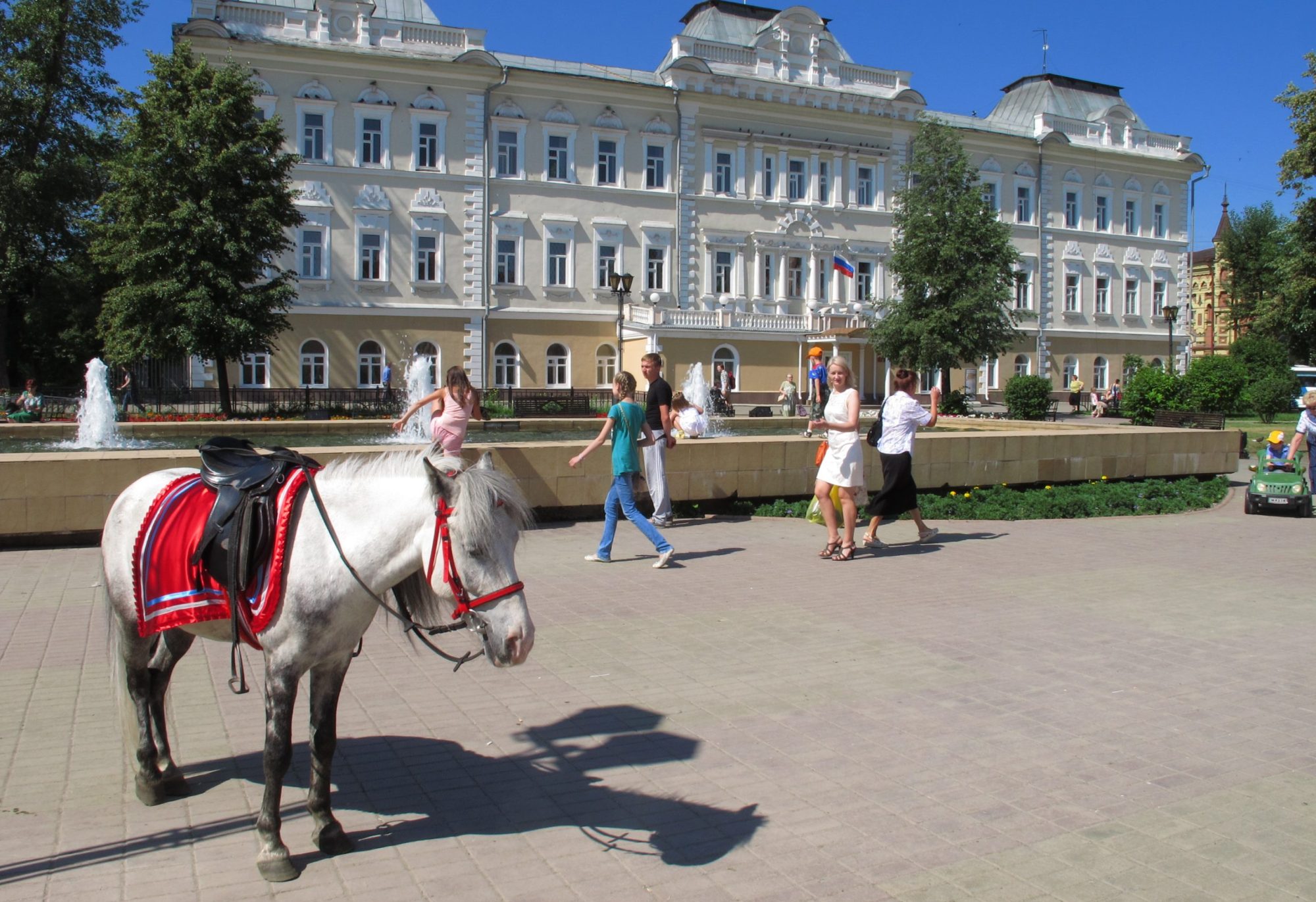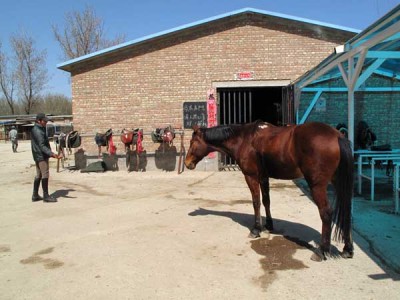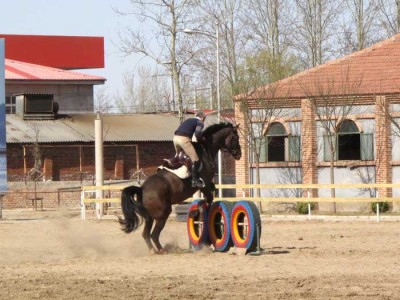An air-conditioned indoor arena in far-west China? Yes. Meet Zhu Jin, chairman of the board of Sheng Tai Yin Co Ltd, and founder-owner of the Shen Mu Yuan equestrian centre in the suburbs of Urumqi, the capital of China’s westerly Xinjiang region. A 30 min drive out of town near the Martyr’s Cemetry, the club was established as part of an ‘ecological’ resort of restaurants and chalet-like hotels. When I visited in July I also noted a mini-zoo including a miserable monkey in a small wire cage and a few sheep badly in need of shearing.
Staff told me Zhu Jin’s main business is coal mining. There are many photos of the man himself in the clubhouse, including shots of Zhu at showjumping competitions in Beijing. In an interview with a local magazine Zhu compares buying horses to buying a car: “you can always buy a new car but if you come accross a horse you really like you just have to buy it.”
Zhu stables 40 horses, half them imported (there’s even a two year old from Japan) and others sourced from the Yili horse breeding base on the Kazakh border, a couple of hours by plane out of Urumqi. Staff include a Russian and an ethnic-Kazakh trainer, who oversee a staff of mostly Uyghurs, the ethnic group indigenous to Xinjiang. There appeared to be a shortage of bedding for the Chinese horses when I visited. I was impressed by the teaching skills of the Kazakh trainer though and was most surprised to find an air-conditioned indoor arena, with giant blowers keeping the air well below the 33C heat outdoors.







